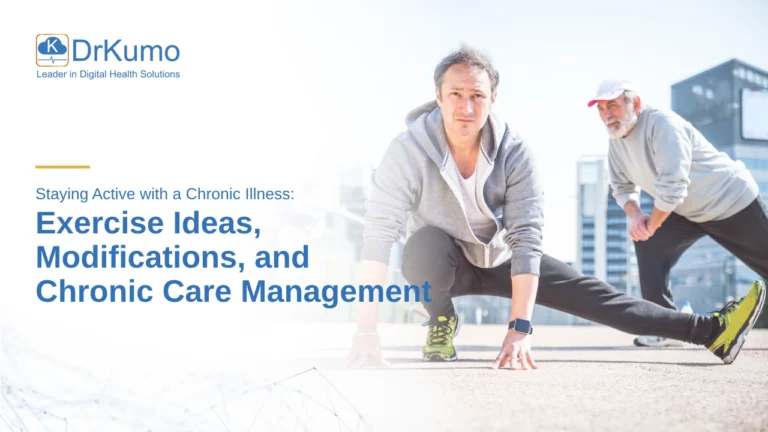Remote Patient Monitoring (RPM) services are revolutionizing chronic disease management, allowing healthcare providers and Federally Qualified Health Centers (FQHCs) to remotely monitor patient health data and intervene proactively. This technology empowers patients to take a more active role in managing their health from the comfort of their homes, ultimately leading to improved clinical outcomes and reduced healthcare costs. But with this innovation comes the question: who qualifies for RPM services under CMS guidelines?
This comprehensive guide provides a clear overview of CMS eligibility and enrollment criteria for RPM, empowering healthcare providers and FQHCs to confidently identify patients who can benefit most from this technology. By understanding CMS requirements, you can ensure seamless implementation of RPM programs, optimize patient care for those who need it most, and maximize reimbursement for your services.
Demystifying Eligibility: Who Can Benefit from RPM Services?
CMS eligibility criteria for RPM services are designed to ensure the technology is used for patients with chronic conditions who can demonstrably benefit from remote monitoring. Here’s a breakdown of key factors determining patient eligibility:
- Established Patient Relationship: A cornerstone of RPM eligibility is an established patient-physician relationship. This ensures continuity of care and allows providers to interpret patient data effectively in the context of their medical history.
- Chronic Condition Diagnosis: Patients must have a diagnosed chronic condition that can be effectively managed through remote monitoring. Common qualifying conditions include diabetes, heart failure, chronic obstructive pulmonary disease (COPD), and hypertension.
- Medical Necessity: The use of RPM services must be deemed medically necessary by the treating physician. This implies that remote monitoring offers a significant advantage over traditional in-office visits for managing the patient’s specific condition.
Additional Considerations for Eligibility
While the above criteria form the foundation for RPM eligibility, some additional factors can influence patient selection:
- Patient Willingness and Capacity: Patients must be willing and able to participate in an RPM program. This encompasses the ability to utilize the provided monitoring devices, understand and interpret data, and communicate effectively with their healthcare provider.
- Access to Technology: Patients need access to the necessary technology, such as a smartphone or tablet, to utilize the RPM platform and communicate with their provider. Healthcare providers and FQHCs should explore options for addressing technology access barriers for certain patient populations.
- Social Determinants of Health (SDOH): Factors like housing stability, food security, and transportation can significantly impact a patient’s ability to benefit from RPM. By considering SDOH during patient selection, healthcare providers can identify patients who may require additional support to participate effectively in the program.
Navigating the Enrollment Process: A Step-by-Step Guide for Providers
Once you’ve identified a patient who meets the eligibility criteria, the next step is enrollment in an RPM program. Here’s a breakdown of the enrollment process under CMS guidelines:
- Informed Consent: Obtain the patient’s informed consent for participation in the RPM program. This consent should clearly outline the program details, data collection practices, and anticipated benefits.
- Documentation: Document the established patient relationship, chronic condition diagnosis, and medical necessity for RPM services in the patient’s medical record.
- Billing Codes: Select the appropriate CPT (Current Procedural Terminology) codes for the RPM services provided.
- Technical Infrastructure: Ensure your practice has the necessary technical infrastructure to support RPM services, including a HIPAA-compliant platform and compatible monitoring devices.
- Ongoing Monitoring: Continuously monitor patient data and adjust the treatment plan as needed.
Maximizing Reimbursement for RPM Services: Understanding CMS Requirements
Effective implementation of RPM services hinges on understanding the associated reimbursement landscape. Here are key points to remember:
- Reimbursement Codes: CMS reimburses healthcare providers for RPM services using specific CPT codes. Codes 99453 and 99454 cover the initial setup and device configuration, while codes 99457 and 99458 reimburse for ongoing monitoring and communication. Additionally, code G0511 can be used by Federally Qualified Health Centers (FQHCs) for chronic care management services that include RPM.
- Data Collection Requirements: To qualify for reimbursement, providers must collect and transmit patient health data for at least 16 days out of every 30-day period. This ensures sufficient data is available to assess patient progress and make informed treatment decisions.
- Documentation Requirements: Detailed documentation of RPM services is crucial for successful reimbursement. This includes notes on patient interactions, data analysis, and adjustments made to the treatment plan based on remote monitoring data.
Optimizing Your RPM Program for Success
While understanding CMS eligibility and enrollment criteria is essential, successful implementation goes beyond simply meeting these requirements. Here are some additional tips for a thriving RPM program:
- Patient Education and Engagement: Patient education is paramount for successful RPM program implementation. Provide patients with clear instructions on how to use the monitoring devices, interpret data trends, and communicate effectively with their healthcare provider. Develop strategies to address any technology access barriers and ensure patients feel comfortable and supported throughout the program.
- Tailored Communication: RPM allows for a more personalized approach to patient care. Healthcare providers can leverage remote monitoring data to tailor communication strategies to address specific patient needs and concerns. This can involve targeted educational resources, proactive intervention based on data fluctuations, and timely adjustments to treatment plans.
- Care Coordination and Collaboration: In the context of FQHCs, RPM plays a vital role in fostering effective care coordination between different healthcare providers involved in a patient’s care plan. RPM data can be shared securely with specialists, nurses, and social workers, enabling them to stay informed about a patient’s health status and adjust their interventions accordingly. This collaborative approach ensures patients receive seamless and coordinated care, regardless of their location.
- Addressing Social Determinants of Health (SDOH): As mentioned earlier, SDOH can significantly impact a patient’s ability to benefit from RPM. By identifying patients facing challenges related to food security, housing stability, or transportation, healthcare providers can connect them with relevant social services and community resources. This holistic approach goes beyond simply monitoring physiological data and addresses the underlying factors that can influence a patient’s overall health and well-being.
- Data Security and Privacy: Protecting patient data is paramount. Healthcare organizations implementing RPM programs must ensure robust data security measures are in place to comply with HIPAA regulations. These measures should encompass secure data transmission protocols, encryption of patient information, and staff training on data privacy practices.
Harnessing the Potential of RPM: Creating a Brighter Future for Patient Care
RPM technology holds immense potential to transform chronic disease management, improve patient outcomes, and reduce healthcare costs. By understanding CMS eligibility and enrollment criteria, healthcare providers and FQHCs can effectively implement RPM programs, ensuring more patients can benefit from this innovative technology.
Furthermore, by focusing on patient education, tailored communication, care coordination, and addressing SDOH, healthcare organizations can create a comprehensive and patient-centered approach to RPM, paving the way for a future of empowered patients, proactive care, and a more efficient healthcare delivery system.
Ready to Embrace the Future of Patient Care?
DrKumo Inc. is a leading healthcare technology company specializing in Remote Patient Monitoring (RPM) solutions. We are committed to empowering healthcare providers with the tools and resources they need to thrive in the evolving healthcare landscape. Our comprehensive library of resources on RPM technology provides valuable insights on implementation strategies, best practices, and successful case studies.
DrKumo offer a user-friendly RPM platform that serves as a central hub for your RPM program. This platform allows you to receive and organize patient data in real-time, generate clinical and billing reports, and gain valuable insights into your patients’ health status. Additionally, DrKumo provides state-of-the-art hardware, including sensor-fusion blood pressure monitors, glucometers, pulse oximeters, and weighing scales. These devices seamlessly integrate with our platform, ensuring secure data transmission and ease of use for both patients and providers.
By partnering with DrKumo, you can unlock the full potential of RPM technology and create a more effective, patient-centered, and cost-efficient healthcare delivery system. Contact DrKumo today to explore our resources and learn more about how we can help you transform your practice.
Disclaimer: This blog is for informational purposes only and does not constitute medical, legal, or financial advice. Consult a qualified professional before implementing any health management technology or program. CMS guidelines for RPM services are subject to change, so verify current regulations with appropriate authorities. DrKumo is not responsible for any errors or outcomes resulting from using this information.








